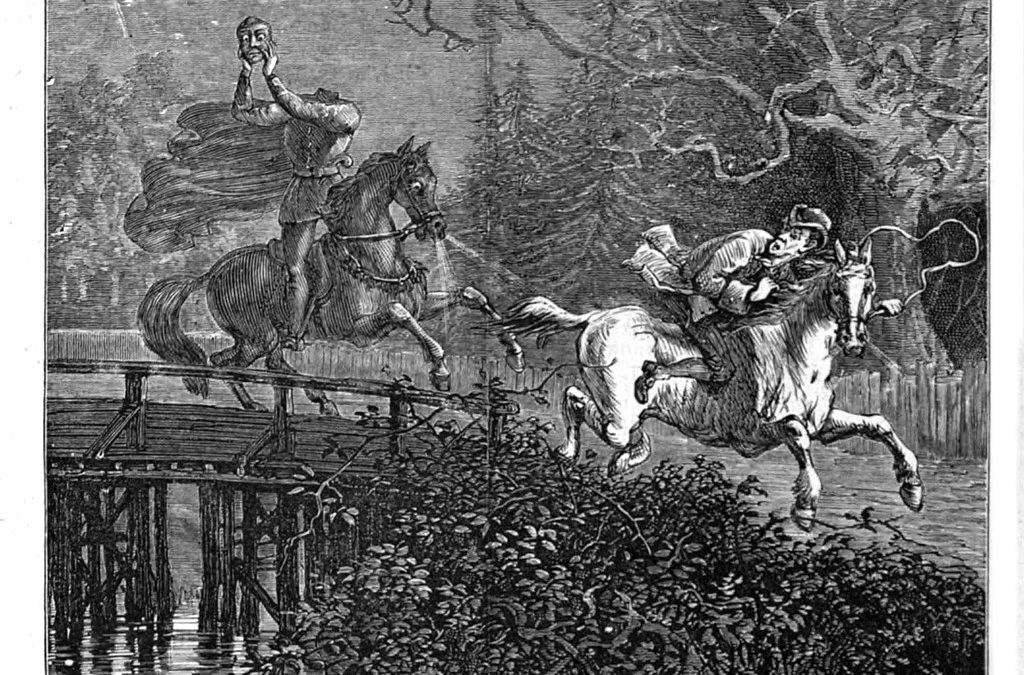Edward Hull, Public domain, via Wikimedia Commons
October 2024
Everything Old
Legend has delighted, spooked us for centuries
by Corbin Crable
Pumpkin-carving season
Autumn is upon us, and with it comes pumpkin-carving season. Maybe you’re planning to load the family up into the car and head out to your local pumpkin patch to pick out the perfect decorative squash to adorn your front porch. I remember pumpkin carving with my dad and brother when I was a kid – Dad would roast the pumpkin seeds in the oven, and we’d enjoy the salty treat for days after.
I’m reminded, too, of one of the oldest and most beloved Halloween tales that even the youngest among us recognize to this day – “The Legend of Sleepy Hollow,” starring that most bone-chilling of villains, the Headless Horseman. The jack-o’-lantern features prominently in this story, which has spooked Halloween revelers for more than two centuries.
“The Legend of Sleepy Hollow” was originally published as a short story in 1820 by Washington Irving. Set in 1790 in a Dutch settlement in New York, it tells the story of Ichabod Crane, a lanky schoolteacher who also is highly superstitious. Ichabod plans to win the heart of a young woman named Katrina Von Tassel, the daughter of a local wealthy farmer, and secure the family’s riches for himself.
The Von Tassel family invites Ichabod to a harvest party, where he competes to win Katrina’s affections alongside Abraham Van Brunt, the town bully (think Gaston from “Beauty and the Beast”).
Headless Horseman
At the party, Abraham regales the crowd with the story of the Headless Horseman, which legend says is the ghost of a soldier decapitated by a cannonball during the Revolutionary War. The horseman is buried, he says, in a churchyard nearby, rising every night to look for his missing head. The horseman is only unable to cross a bridge that stretches across a stream along the way, barred by otherworldly forces.
Ichabod leaves the party on horseback later that evening after being rejected by Katrina; on his way home, he encounters a mysterious cloaked rider, who chases Ichabod and his horse. Ichabod crosses the bridge, while the horseman, unable to cross, hurls his severed head at the terrified schoolteacher and his horse.
The following morning, Ichabod’s horse is found, but Ichabod himself is nowhere to be seen. The story implies that the horseman was actually Abraham, Ichabod’s romantic rival, who flung a jack-o’-lantern at Ichabod as a false head – a smashed pumpkin was found close to the bridge.
“The Legend of Sleepy Hollow”
“The Legend of Sleepy Hollow” has been adapted countless times in media in the centuries since its initial publication, including in “The Adventures of Ichabod and Mr. Toad” (1949), an animated Walt Disney feature; in the 1999 Tim Burton film “Sleepy Hollow,” starring Johnny Depp and Christina Ricci; and, most recently, in the crime/horror TV series “Sleepy Hollow,” which ran for four seasons and saw Ichabod Crane awaken in the 21st century and team up with a small-town cop to help bring down the Headless Horseman.
A terrifying tale indeed, Washington Irving’s “The Legend of Sleepy Hollow” maintains its place in pop culture today, scattered among the pumpkins found smashed by nameless, faceless hooligans every holiday season.
Happy Halloween, and enjoy the fun and frights of the season – just remember not to lose your head!


